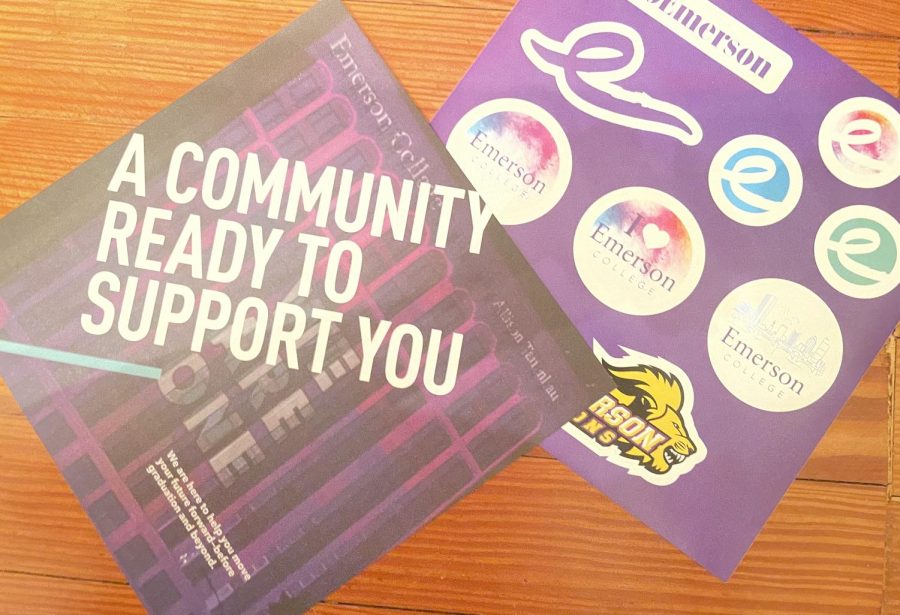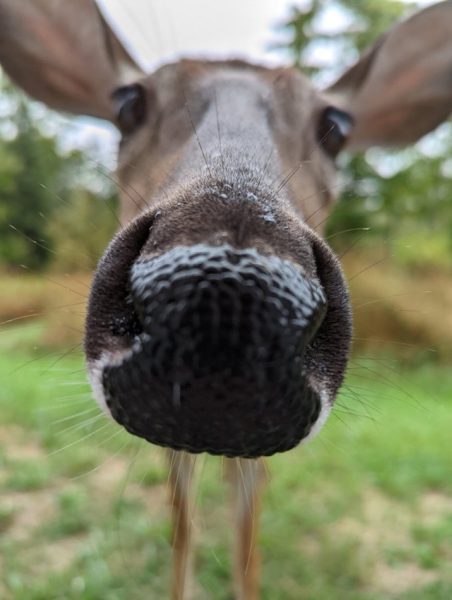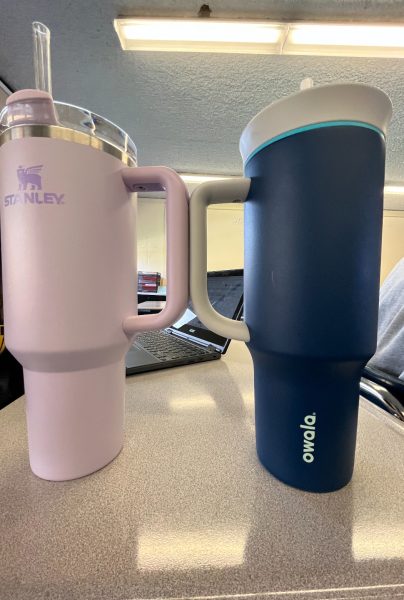How to Choose a School: Advice from a Senior on the Big Decision
Picture this: You’re a Nanuet High School Senior. You’ve spent four years in these halls, and maybe you’ve even spent the nine years prior traveling about Nanuet’s campus. You bleed black and gold. But it’s all you’ve ever known, and suddenly, you’re expected to grow up, move out, and pick a major and select a school where you’ll spend the next few years, then finally exit with a diploma, and hopefully, a ton of memories.
Maybe you have a plan, or maybe you always had a plan but now your mind has changed, or maybe you are totally lost. No matter what, seniors can take comfort in knowing that no one is alone. You’re not the only person, nor the first or the last, to make these grueling decisions and self discoveries. Ultimately for all of us, the only way out is through.
But that’s no comfort. The universally dreaded question, Where to begin? Plagues our minds equally.
Here are some recommendations from one who has been through the trenches.
Everyone will tell you not to leave all of your planning and college searching until the fall or winter of senior year. This is true. It is great to do as much research as possible during your underclassman years; try figuring out what you don’t like first, and it will become more obvious what it is you do like. Maybe as a freshman you don’t mind science, and could see yourself at a big research school with D1 sports teams. Maybe a small liberal arts college is more your speed.
But keep in mind, between freshman and senior year, and even between junior and senior year, a lot will change. Teenagers are known to change their minds frequently, and you will probably find yourself with completely different deal breakers, wants, and needs senior year compared to what you had previously thought.
Up until it’s time to apply, the best thing to do is to keep a very open mind. Begin to learn about yourself, weed out what you don’t like, and start to create some loose idea of what you do. This is subject to change, so never pigeon hole yourself, because both your identity and life plan will certainly change as you grow. When you’re fourteen, fifteen, sixteen, you have no clue where you’ll want to be at twenty two. No one does.
But when the CommonApp officially opens on August first, it is about that time to make some choices, if you haven’t already.
After four years of becoming who you are, picking a major should now be within reach. It should be a subject that you’re both interested in and somewhat good at. Keep in mind that you are usually able to go in undecided or change your major early on. Choosing a major is not the most important decision you will ever make, but try to choose wisely.
Perhaps you’d figured out during sophomore year that you want to become a dentist. You’ll naturally have started looking at all the schools that have decent biology/dentistry programs. But you can’t (and likely won’t want to) apply to all of these schools, so it is imperative you determine your deal breakers, wants, and needs. You don’t want to waste an application on a school that may have the right program, but is the totally wrong fit.
Whether you have chosen a potential major or not, location is the next thing to consider. Figuring out where you’d like to live in for four years is a good first step to narrowing down your choices. Maybe you want to stay in state, maybe you’d love a city, maybe you want to go as far as you can get. Choosing a desired location should sort out a handful of potential schools, and the smaller your pool of options is, the easier your final decision will be.
Deal breakers, wants, and needs are not limited to location or program. Consider your GPA and SAT scores, your extracurriculars, and your essay-writing capabilities. Not every school will be a realistic option, and that’s okay. Research the academic rigor of the schools in which you’re interested. Acceptance rates usually reflect this. A university may be great for your desired major and in a location you love, but be realistic; no one wants to suffer through college and drown in work, and for some, rejection letters are hard to face. A few reach schools, ones that you may not have a great chance of acceptance at, is perfectly fine. Reach for the stars. But have a few safety schools to fall back on, and fill the rest of your roster with target schools, ones that match your academic capability best. This is where knowing yourself as a student comes in handy.
But don’t let academics be your only deciding factor. It is important to find an academic match, but don’t dwell on acceptance rates. Many schools have higher acceptance rates for early decision applicants (this application is binding, if accepted you must attend), and early action applicants (this one is not binding).
Your wants are very important, regardless of your academic status. If your heart is set on studying abroad, it won’t help you to apply to safety schools (just because you are sure you’ll be accepted) if they don’t have interesting study abroad programs. If your career field is especially competitive and you feel like you’ll need internship opportunities, or you really want to join an improv group, find the schools that meet those wants, along with all of your academic needs. It sounds daunting, but with a few Google searches, I promise it’s possible.
Let’s say you applied to 6 schools. Maybe you get into 4. How do you choose?
Obviously, college visits are great. They are something that a student can do at any point during their high school career. And while your preferences may change over four years, you can always look back on your college visits senior year and try to imagine yourself living at those schools. Maybe you liked a school when you were sixteen that you can’t imagine going to at eighteen. So having physically visited a school’s campus is a very useful tool for imagining your future, because your memory of the school won’t change as your mind does.
Virtual tours and zoom-questionnaires are also provided by many schools. Although they may not help you feel a special connection to a school, you can become more educated about its campus and size, and factors like transportation, housing, study abroad and internship opportunities, diversity, and more, that may help you make your decision.
Once you’ve been accepted into a college or university, they will likely invite you to their Admitted Students’ Day. This is the day where any and all admitted students can visit. These days are very different from normal campus visits. On Admitted Students’ Day, the school really wants you to be able to picture yourself there, so they do more than they would for the average prospective applicant. They will often explain your personal major’s curriculum in detail, provide opportunities for you to ask questions to a panel of students and/or professors, give you space to make friends with other admitted students, and sometimes allow you to meet with financial aid offices. This is probably the most useful tool in making your decision.
Financial aid is also a very important factor in choosing a school, because college is very expensive. Every family’s financial situation is different, so opening up a line of dialogue with your family is the best way to figure out your personal plan. For many, the summer after junior year is a good time to start researching scholarships, and schools that generously give them out. For others, senior year is the time to check out scholarships, student loans, and federal aid. When it comes to financial aid, don’t procrastinate. Talk to your family about logistics, fill out the FAFSA and CSS forms as quickly as you can, and put in the work. If you have questions about financial aid, the internet is a great resource, and signing up for schools’ financial aid presentations (usually held on zoom) is a perfect opportunity to ask specific questions.
My final recommendation is to sit down at any point between February and April, since you usually must be committed to your school by May 1, and make a spreadsheet. Take everything you know, and create categories that will help you distinguish each school. Categories may look like “cost”, “[your major] program”, “location”, even “dorm size” or “overall vibe”, to name a few. Rank each school on a scale from 1-10 in each category, and compare the totals. Whichever has the highest total is probably the school for you.
In the end, there truly may not be a perfect university or college out there. But ideally, the school you choose should fit the following criteria: be a suitable size to what you are comfortable with, have a program that you are interested in and can prepare you for the future, have like minded students and extracurriculars that interest you, be somewhere you would not mind living for at least four years, and not be so costly that you will be in debt indefinitely.
Wherever you start, whether that be valuing affordability, majors/programs, diversity or internship opportunities, learning about yourself will always pay off. Pick a school that you believe (based on how well you know yourself and your needs) will make you happy, and improve the course of your life thereafter. The process is long and difficult, and at the end, you may realize there is no one school that will make you happy or improve your life. School is not for everyone, and by senior year, it’s been a long thirteen years of it. But if you do sit down and put in the work of endless Google searching, and find that school that makes sense for you, it will be one of the best gifts you will ever give yourself.










